Members of FOLK have been visiting Charlton Kings Common over the years to monitor the abundance of important plant species in the grassland and of butterflies. The presence of special plants and rare butterflies were amongst the reasons why the wider site was designated a Site of Special Scientific Interest in 1954. Two bird species, Meadow Pipit and Grasshopper Warbler, were mentioned in the designation, but there is currently no systematic monitoring of the bird populations. This contrasts with the first decade of the century, when Tony and Frances Meredith, as members of both FOLK and of the Cheltenham Bird Club, made detailed records of birds seen on their very regular visits to the site. The records made by Tony, Frances and others are the basis for this summary of the bird life of the Common and Leckhampton Hill, or perhaps more accurately, the more open sections of the site, as the woodland areas, where birds are generally more difficult to see, seem not to have been so regularly visited.
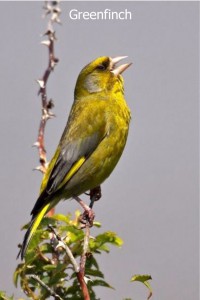 Of the two species mentioned when the SSSI was designated, the Meadow Pipit is now rarely seen and the Grasshopper Warbler, a summer visitor to the UK, no longer breeds. (A Grasshopper Warbler was reported on page 15 of FOLK Newsletter Issue 54 Summer 2017 as being heard on the Common.) Why the former should have been virtually lost is unclear, but the loss is part of a Europe-wide decline since about 1980. The Grasshopper Warbler has also declined elsewhere in the UK, but a contributing factor on the Common may be the destruction of large stands of Gorse, one of its favoured nesting sites, by the major fire of 2003. A species not mentioned in the 1991 listing is the Tree Pipit. This summer visitor has also suffered a national decline in numbers in recent years and has been listed amongst the bird species of Greatest Conservation Concern in the UK. Fortunately, a few pairs still breed on the escarpments of the Common, with males using isolated trees from which to soar in their territory display. (For more information on Tree Pipits see the article on page 5 of FOLK Newsletter Issue 16 Summer 2004)
Of the two species mentioned when the SSSI was designated, the Meadow Pipit is now rarely seen and the Grasshopper Warbler, a summer visitor to the UK, no longer breeds. (A Grasshopper Warbler was reported on page 15 of FOLK Newsletter Issue 54 Summer 2017 as being heard on the Common.) Why the former should have been virtually lost is unclear, but the loss is part of a Europe-wide decline since about 1980. The Grasshopper Warbler has also declined elsewhere in the UK, but a contributing factor on the Common may be the destruction of large stands of Gorse, one of its favoured nesting sites, by the major fire of 2003. A species not mentioned in the 1991 listing is the Tree Pipit. This summer visitor has also suffered a national decline in numbers in recent years and has been listed amongst the bird species of Greatest Conservation Concern in the UK. Fortunately, a few pairs still breed on the escarpments of the Common, with males using isolated trees from which to soar in their territory display. (For more information on Tree Pipits see the article on page 5 of FOLK Newsletter Issue 16 Summer 2004)
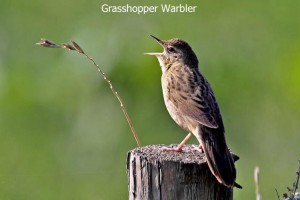 A convenient way to consider the site’s avifauna is to review each of its main habitats (grassland, scattered shrubs, scrub and woodland) separately, whilst not forgetting the sky overhead. We also need to be aware that there may be differences, in both overall bird numbers and the species involved, between the exposed Cotswold Plateau and the more sheltered lower slopes.
A convenient way to consider the site’s avifauna is to review each of its main habitats (grassland, scattered shrubs, scrub and woodland) separately, whilst not forgetting the sky overhead. We also need to be aware that there may be differences, in both overall bird numbers and the species involved, between the exposed Cotswold Plateau and the more sheltered lower slopes.
The steep grassland slopes, generally north facing and with a tall sward, used to support Meadow Pipits, but generally have few birds of a limited number of species. Both exposure and the tangled nature of the vegetation, that will limit feeding opportunities, probably contribute to this paucity, but the relative lack of protection and sanctuary, in the form of scrub, must play a major role.
It is generally in late August and September that one can see the greatest number of birds from the grassland slopes. In certain weather conditions very large numbers of hirundines, mainly Swallows and House Martins, move along the slopes feeding on insects, probably concentrated here by the wind. Where there is a mix of grassland and scrub, as in Daisybank Meadow, then the habitat is much better for birds. Here one can find species such as Bullfinch, Whitethroat and Lesser Whitethroat breeding, whilst at any time of year one might expect to encounter Blackbird, Robin, Wren, Dunnock and a variety of Tits. Flat grassland on the plateau, as in the Hill Fort, is generally kept short and can provide a feeding opportunity for thrushes, both residents such as Blackbird and winter visitors such as Redwing and Fieldfare. One might even see Green Woodpecker here on occasion, whilst small numbers of Skylark breed on such grassland or on adjacent farmland.
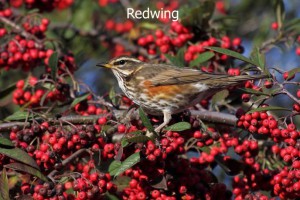 As indicated above, scrub can generally support many more birds than grassland, as it can provide the key needs of birds in the form of food, shelter, nest sites and protection from some predators. Unfortunately much of the scrub on the site is presently in a less than ideal condition for birds, with the shrubs being very leggy and there often being no understorey, so that shelter is limited and nest sites are few. It is hoped that a Scrub Management Plan that is being prepared will help remedy this situation. One issue being addressed in the Plan is the need to safeguard those areas of scrub of high value to birds, such as dense clumps of Bramble, and prevent them from being cut unnecessarily. Breeding birds found in scrub, in addition to those listed in the Grassland section above, include; Yellowhammer, which can frequently be seen from the Cotswold Way, Chaffinch and Greenfinch. Winter bird populations may include some of these species, but the number of birds is likely to be lower, save when winter visitors such as Redwing and Fieldfare call in to feed on the often abundant Hawthorn berries.
As indicated above, scrub can generally support many more birds than grassland, as it can provide the key needs of birds in the form of food, shelter, nest sites and protection from some predators. Unfortunately much of the scrub on the site is presently in a less than ideal condition for birds, with the shrubs being very leggy and there often being no understorey, so that shelter is limited and nest sites are few. It is hoped that a Scrub Management Plan that is being prepared will help remedy this situation. One issue being addressed in the Plan is the need to safeguard those areas of scrub of high value to birds, such as dense clumps of Bramble, and prevent them from being cut unnecessarily. Breeding birds found in scrub, in addition to those listed in the Grassland section above, include; Yellowhammer, which can frequently be seen from the Cotswold Way, Chaffinch and Greenfinch. Winter bird populations may include some of these species, but the number of birds is likely to be lower, save when winter visitors such as Redwing and Fieldfare call in to feed on the often abundant Hawthorn berries.
“Woodland” on the site includes several different plant communities, ranging from rather scattered trees with a good ground vegetation alongside the Golf Course, through a variable set of stands of deciduous trees with some understorey on the western part of Leckhampton Hill, to dense Beech and planted conifers, with virtually bare ground below them, on the eastern part of the Hill. As with the grassland, some communities, particularly the Beech and the conifers, host very few birds at certain times of the year. Elsewhere one can encounter many of the species listed as users of scrub, plus more woodland specialist species such as the resident Treecreeper and Nuthatch, or winter visitors such as Brambling, Siskin or Redpoll. Summer visitors that breed include Blackcap, Garden Warbler and Willow Warbler, whilst Great Spotted Woodpecker breeds on the Hill or nearby. Tawny Owl is regularly heard calling in woodland alongside Daisybank Road.
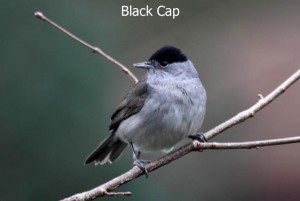 Woodland and older stands of scrub are used for nesting by a set of larger birds, such as Carrion Crow, Magpie, Jay and Woodpigeon, whilst good numbers of Jackdaw breed in the cliffs of Dead Man’s and Salterley Quarries. All of these species can be seen flying over at times. Also sometimes seen in the air are Ravens, a species which, unlike the two Pipits and the Grasshopper Warbler mentioned above, has increased markedly in numbers in Gloucestershire over the past 20 years. The Buzzard is another species often seen overhead. (For more information on Buzzards see the article on page 8 of FOLK Newsletter Issue 15 Spring 2004). Buzzards generally use the thermals created by the steep scarp slope to soar like the paragliders that sometimes use the site, rather than flying purposefully over like the Raven. Kestrels can sometimes be seen hovering in search of prey, whilst Sparrowhawks can be encountered as they hunt for small birds. At different times of the year and of the day a wide range of species, such as several species of gull, waders such as Golden Plover and Lapwing, corvids such as Jackdaw, and Woodpigeon, pass over the site on migration or whilst moving between their daytime feeding areas and their overnight roosts.
Woodland and older stands of scrub are used for nesting by a set of larger birds, such as Carrion Crow, Magpie, Jay and Woodpigeon, whilst good numbers of Jackdaw breed in the cliffs of Dead Man’s and Salterley Quarries. All of these species can be seen flying over at times. Also sometimes seen in the air are Ravens, a species which, unlike the two Pipits and the Grasshopper Warbler mentioned above, has increased markedly in numbers in Gloucestershire over the past 20 years. The Buzzard is another species often seen overhead. (For more information on Buzzards see the article on page 8 of FOLK Newsletter Issue 15 Spring 2004). Buzzards generally use the thermals created by the steep scarp slope to soar like the paragliders that sometimes use the site, rather than flying purposefully over like the Raven. Kestrels can sometimes be seen hovering in search of prey, whilst Sparrowhawks can be encountered as they hunt for small birds. At different times of the year and of the day a wide range of species, such as several species of gull, waders such as Golden Plover and Lapwing, corvids such as Jackdaw, and Woodpigeon, pass over the site on migration or whilst moving between their daytime feeding areas and their overnight roosts.
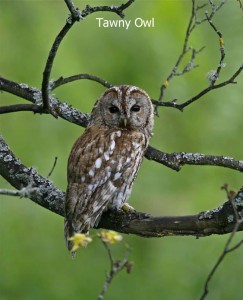 Neither the Common nor the Hill are meccas for birdwatchers hoping to see rare or unusual birds, although these can turn up in the most unlikely situations. Amongst the less usual species seen in recent years are spring migrants such as Redstart and Wood Warbler, winter visitors such as Black Redstart, Crossbill and Snow Bunting, or the increasingly seen Red Kite. More regular monitoring might extend this list.
Neither the Common nor the Hill are meccas for birdwatchers hoping to see rare or unusual birds, although these can turn up in the most unlikely situations. Amongst the less usual species seen in recent years are spring migrants such as Redstart and Wood Warbler, winter visitors such as Black Redstart, Crossbill and Snow Bunting, or the increasingly seen Red Kite. More regular monitoring might extend this list.
It is unfortunate that the ornithological interest of the two sections of the site has, in common with much of southern England, declined somewhat in recent years, due to pressures such as intensive agriculture, climate change and lowered overwinter survival of migrants going south in winter. This impact has been most severe on the breeding birds. However, the site still has good populations of many common species, and also of several species, such as Linnet, Tree Pipit, Willow Warbler and Yellowhammer, that are listed as being of Conservation Concern in the UK because of their limited or declining numbers. Whatever changes have occurred over time, the Hill and the Common combined are almost certainly the site closest to urban Cheltenham, and easily accessible, where one can encounter a typical British bird community.
The above is a near-copy of an article included on pages 4-7 of FOLK Newsletter Issue 44 Spring 2014. Another general article on birds can be found on page 3 of FOLK Newsletter Issue 02 December 2000.
A list of birds regularly seen on the site, compiled in 2002, is given below along with records of birds seen or heard during annual observation walks.
| 2002 checklist of birds seen regularly on Leckhampton Hill & Charlton Kings Common | Seen on Bird Observation Walks | ||||||
| May 2003 | April 2005 | May 2006 | May 2007 | May 2009 | |||
| Present all year | |||||||
| Raptors | |||||||
| Buzzards | √ | √ | √ | √ | √ | ||
| Sparrow Hawk | √ | ||||||
| Kestrel | √ | √ | |||||
| Pigeons | |||||||
| Feral Pigeon | √ | √ | |||||
| Collared Dove | √ | ||||||
| Stock Dove | √ | √ | |||||
| Wood Pigeon | √ | √ | √ | √ | √ | ||
| Owls | |||||||
| Tawny Owl | |||||||
| Little Owl | |||||||
| Woodpeckers | |||||||
| Green Woodpecker | √ | √ | √ | ||||
| Greater Spotted Woodpecker | √ | ||||||
| Pipits | |||||||
| Meadow Pipit | |||||||
| Accentors | |||||||
| Dunnock | √ | √ | √ | √ | √ | ||
| Wrens | |||||||
| Wren | √ | √ | √ | √ | √ | ||
| Warblers | |||||||
| Blackcap | √ | √ | √ | √ | |||
| Goldcrest | √ | √ | √ | ||||
| Corvids | |||||||
| Carrion Crow | √ | √ | √ | √ | |||
| Rook | √ | √ | √ | ||||
| Jackdaw | √ | √ | √ | √ | |||
| Magpie | √ | √ | √ | √ | √ | ||
| Jay | √ | √ | √ | √ | |||
| Raven | √ | ||||||
| Thrushes | |||||||
| Robin | √ | √ | √ | √ | |||
| Blackbird | √ | √ | √ | √ | √ | ||
| Song Thrush | √ | √ | √ | √ | |||
| Mistle Thrush | √ | √ | √ | ||||
| Tits | |||||||
| Marsh Tit | √ | √ | |||||
| Blue Tit | √ | √ | √ | √ | √ | ||
| Coal Tit | √ | √ | √ | ||||
| Great Tit | √ | √ | √ | √ | |||
| Long-Tailed Tit | √ | √ | √ | ||||
| Nuthatchers | |||||||
| Nuthatch | √ | ||||||
| Treecreepers | |||||||
| Eurasian Treecreeper | |||||||
| Finches | |||||||
| Chaffinch | √ | √ | √ | √ | |||
| Bullfinch | √ | √ | √ | √ | |||
| Greenfinch | √ | √ | √ | √ | √ | ||
| Goldfinch | √ | ||||||
| Linnet | √ | √ | √ | √ | √ | ||
| Buntings | |||||||
| Yellowhammer | √ | √ | |||||
| Others | |||||||
| Pheasant | √ | √ | √ | √ | √ | ||
| Starling | √ | ||||||
| Black-Backed Gull | √ | ||||||
| Spring/Summer Visitors | |||||||
| Cuckoos | |||||||
| Common Cuckoo | √ | ||||||
| Hirundines | |||||||
| Swallow | √ | √ | √ | ||||
| House Martin | √ | ||||||
| Swifts | |||||||
| Common Swift | √ | ||||||
| Pipits | |||||||
| Tree Pipit | √ | √ | √ | √ | |||
| Warblers | |||||||
| Grasshopper Warbler | √ | ||||||
| Garden Warbler | √ | ||||||
| Willow Warbler | √ | √ | √ | √ | √ | ||
| Chiffchaff | √ | √ | √ | √ | √ | ||
| Whitethroat | √ | √ | √ | √ | |||
| Lesser Whitethroat | √ | ||||||
| Flycatchers | |||||||
| Spotted Flycatcher | |||||||
| Thrushes | |||||||
| Redstart | |||||||
| Autumn/Winter Visitors | |||||||
| Thrushes | |||||||
| Redwings | |||||||
| Fieldfares | |||||||
| Finches | |||||||
| Siskins | |||||||
| Redpolls | |||||||